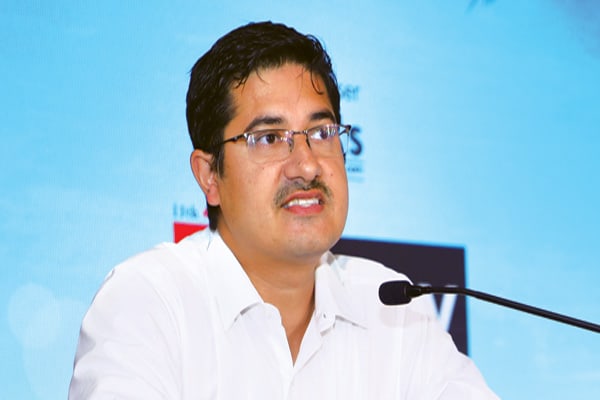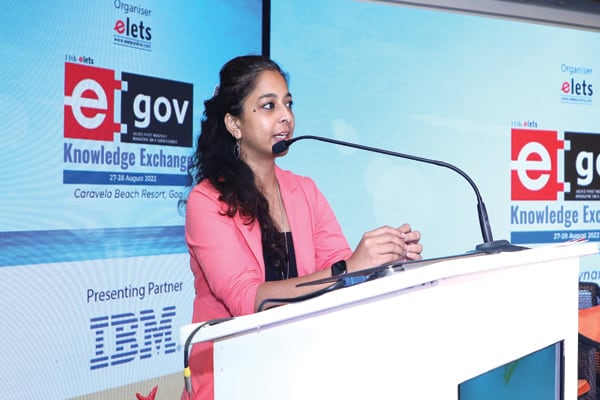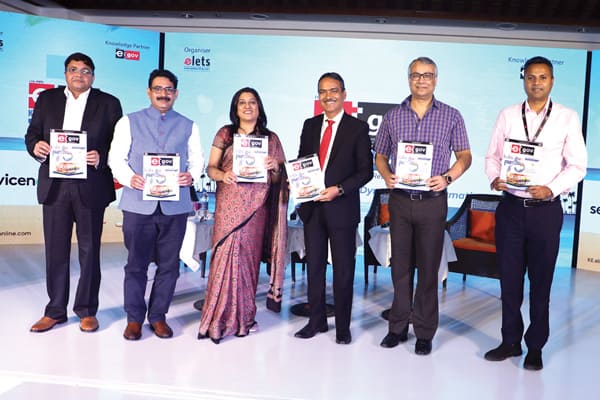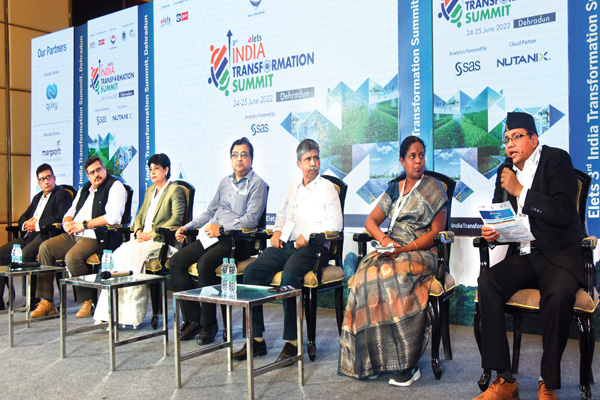
India, since its independence, has travelled a long distance in terms of developing its economy. By bringing robust policies and laws, it has effectively tried to address the ambition and aspirations of India and make its economic outlook more aligned with contemporary demands. India, in the 21st century, is more agile and active and is blessed with skilled talents whose works are recognised worldwide. Highlighting this, Arvind Kumar Chaudhary, Special Secretary (IT), Government of Bihar; Dr. B. R. Mamatha, Additional Mission Director, SAKALA Mission, Department of Administrative Reforms, Government of Karnataka; Shilpa Nag, Commissioner, Rural Development & eGovernance, Government of Karnataka; Abhishek Sharma, Chief Executive Officer, Jammu & Kashmir eGovernance Agency (JaKeGA) and Mirant Parikh, District Development Officer, Junagadh, Gujarat spoke at the Elets Knowledge Exchange Summit, Goa.

Arvind Kumar Chaudhary, Special Secretary (IT), Government of Bihar
Arvind Kumar Chaudhary, Special Secretary (IT), Government of Bihar, said that India, as a nation, has made great strides everywhere. “From analog in 20th century to digital in 21st century, first and second generation communication before 2000 to fifth generation communication in 2020, offline to online dissemination of public service and information, and from cash to booming digital transactions,” he stated.
Elaborating on the transformational role played by low data tariffs in India, he said, “Data has become the most basic need of today. Total telecommunication connections today have grown to 118 crores. With 150 crore GB per month of mobile data consumption, India is now the world’s number one mobile data consuming country, leaving behind China and USA altogether. This data flow shows how exponentially digital communication has grown in the country. India at 75 is entering the fifth generation of the communication era with revolutionary services to advance the digital India vision.”

“The introduction of 5G in blend with the Internet of Things and Artificial Intelligence will bring further revolutionary digital transformation to the nation. 5G will provide a new dimension to Digital India. As far as the contribution of the IT industry to the Indian economy is concerned, it accounts for more than 8 per cent of India’s GDP. It is one of the highest employment-providing sectors in the country with a 4.8 million IT workforce. The use of digital technologies brings governance closer to people. A report said that Digital India has helped government machinery in enhancing the country’s revenue to save Rs 2.2 lakh crore from going into the wrong hands in the last 8 years,” Chaudhary said.
He further said that the outbreak of the COVID pandemic at the beginning of this decade has further underlined the importance of digital technologies and accelerated the digital movement. “Today, India’s digital transformation is itself in its full momentum. It is now self-driven. All the departments of the government are now adopting digital solutions for good governance,” he concluded.


Dr. B R Mamatha, Additional Mission Director, SAKALA Mission, Department of Administrative Reforms, Government of Karnataka
Effective coordination and collaboration between various departments of the Central government as well as of the state governments or between various states are imperative to make governance and administration smooth and efficient in the economy. Dr. B R Mamatha, Additional Mission Director, SAKALA Mission, Department of Administrative Reforms, Government of Karnataka, said, “Collaboration is the future because every state is taking some initiative or other to enhance the governance in its own way. What the future calls for, is a collaboration among the states and departments within the state.”
Speaking on governance, she said, “As the need advances, comes the assessment, using which we can figure out what we can do and how we can do it. We also understand that with all the initiatives behind this, we need to know whether the citizens are satisfied with what we are providing them. When we talk about citizen-centricity, we should look at easy access to citizens, affordability must be there and with less invasive technology.”
“We also need to make sure that all the data we have collected is secure. This is the most important thing for the future. Data is the key and it is important to ensure that data sharing among ourselves is safe and secured,” she concluded.

Shilpa Nag, Commissioner, Rural Development & eGovernance, Government of Karnataka
To make the governance future ready to meet the challenges and aspirations of contemporary times, effective leveraging of emerging technology like AI&ML, robotics, and drones becomes extremely crucial. Shilpa Nag, Commissioner, Rural Development & eGovernance, Government of Karnataka, said “The happiness of the king lies in the happiness of his people – so is the concept of governance! Governance should take into account people-centric approaches.
There is also a lot of learning management system-related activity going on, such as giving information to people through the citizen information portal. We have created multiple portals for faster dissemination of public services.
Today, the risk is non-repetitive,” she said.
“In the governance process, whenever a fund is available before executing any work – planning, monitoring, implementation, and evaluation are the primary steps that need to be performed so that revenue is not squandered unnecessarily and there is a check on corruption,” she further said.

Abhishek Sharma, Chief Executive Officer, Jammu & Kashmir E-governance Agency (JaKeGA)
Abhishek Sharma, Chief Executive Officer, Jammu & Kashmir E-governance Agency (JaKeGA) said that Jammu & Kashmir was quite new to the digital ecosystem and most of the initiatives have been taken post reorganisation i.e., after 2019. “Going digital has helped us in a lot of ways. We have two capitals – Jammu and Srinagar
– and every year, more than 300 trucks are used to carry documents and files from Jammu to Srinagar in summers and then back from Srinagar to Jammu in winters. This movement of files alone used to cost us Rs 300 crore annually,” he said.
Post reorganisation, the first task given to JaKeGa, an IT department, was to onboard an eOffice. In 45 days, all administrative secretaries and HODs went on eOffice, resulting in a cost saving of Rs 300 crore annually, he said. “Right now, we have 15,000 users on eOffice. Even the CS office is in the eOffice. So, we could finally be done with the need of cumbersome physical file movement. We have also given awards to the officers who have done files in the shortest time possible. All this has helped us in achieving accountability in the system,” he said.
“In J&K, the target of the government is to make the system more accountable, and transparent and there is no other alternative other than going digital,” Sharma said, adding that “earlier in the fund flow, nobody knew where the funds were going. But in J&K, there is a process called Budget Estimation Accounting and Monitoring System. In this process, everything is online. And you must link it with proof, so if any DDO is releasing the budget, it can’t be done without entering the portal of the work. Funds get released in exchange for some work and that work must get uploaded in the form of a photograph. Not a single penny can be spent without going digital,” he said.
“With the intention to go digital and make the process even deeper, we have launched an online billing system, in which contractors are registered online. We are very new to this system and there is no baggage. So our philosophy is to promote transparency and accountability through this,” he concluded
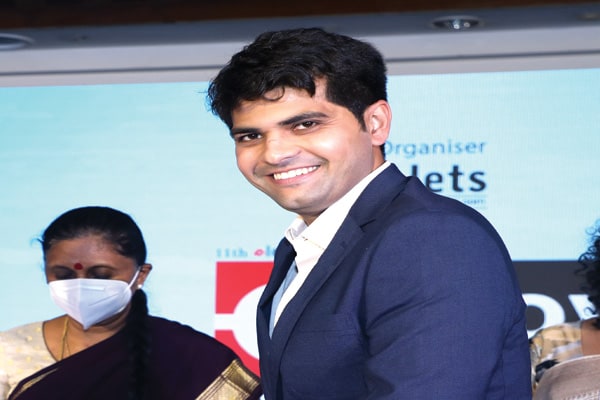
Mirant Parikh, District Development Officer, Junagadh, Gujarat
“Overall concept of e-governance brings to us four to five main facets of governance. The major one is the concept of accountability. The second is the concept of transparency. The third is public service delivery, especially at the grassroot level. And the fourth point is the elimination of discretionary powers that we had at different stages,” said Mirant Parikh, District Development Officer, Junagadh, Gujarat.
“Overall concept of e-governance brings to us four to five main facets of governance. The major one is the concept of accountability. The second is the concept of transparency. The third is public service delivery, especially at the grassroot level. And the fourth point is the elimination of discretionary powers that we had at different stages,” said Mirant Parikh, District Development Officer, Junagadh, Gujarat.”
On the overall concept of e-governance, he commented, “Adding the letter E into the concept of governance entails the overall transformation of governance. Minimum government and maximum governance must be the norm.” He further said that all sorts of loopholes that have existed for a long time are being addressed and eliminated in Gujarat, rendering the state the best tech-driven state in India.
Stressing upon the superb role played by the Finance Commission, he said, “The 15th finance he said, “The 15th finance commission, a constitutional body set up to maintain fiscal federalism in India, whose core responsibility is to evaluate the state of finances of the Union and state governments recommend the sharing of taxes among states. In its recent reports, it gave greater emphasis on allocating resources for rural development, especially at panchayat level. So, the aspect of decentralisation in administration is paramount in transforming the governance at the grassroots level in India.”
He concluded by saying that Gujarat has made major strides in that regard. The e-governance system is being made more robust and resilient in the state.
Be a part of Elets Collaborative Initiatives. Join Us for Upcoming Events and explore business opportunities. Like us on Facebook , connect with us on LinkedIn and follow us on Twitter, Instagram.




